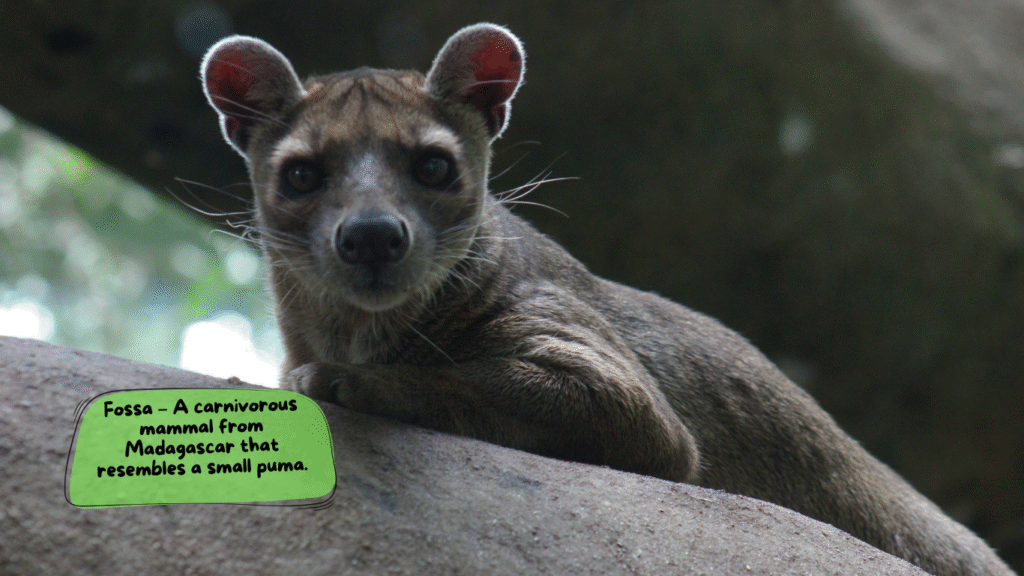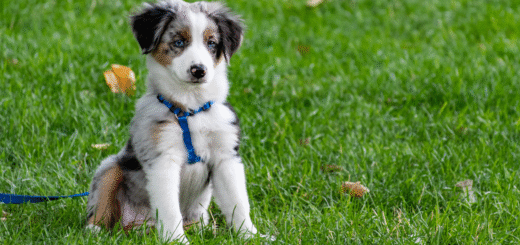The Fossa: The Mysterious Predator of Madagascar
The fossa (scientific name: Cryptoprocta ferox) is one of the most enigmatic and elusive carnivores on Earth. Found only in Madagascar, this remarkable mammal shares more in common with cats than dogs, despite being a member of the family Eupleridae, which is unique to the island. Known for its sleek body, agile movements, and formidable hunting skills, the fossa is the apex predator of Madagascar, playing a crucial role in maintaining the island’s delicate ecosystem.

What is a Fossa?
Often described as a cross between a cat and a mongoose, the fossa is a medium-sized carnivore that primarily preys on lemurs but will also target other small mammals, birds, and reptiles. Adult fossas typically weigh between 5.5 to 8.5 kg (12 to 19 pounds) and measure around 70 cm (28 inches) in length, with a tail that adds an additional 60 cm (24 inches). Their physical appearance is slender, with short, velvety fur, a long tail for balance, and sharp claws that help them climb trees with ease.
While their body structure may remind you of a cat, fossas are more closely related to the mongoose family. They are the only remaining species of the genus Cryptoprocta and are often regarded as the top predators in Madagascar due to their exceptional hunting abilities.
The Fossa’s Unique Hunting Skills
Fossas are solitary creatures and are primarily nocturnal, making them even more elusive. Their hunting strategy is highly efficient, relying on their agility and climbing prowess to catch their prey. The fossa is an excellent climber, able to ascend trees with ease and hunt in the canopy, an ability that distinguishes it from many other terrestrial predators.
Their primary prey is the lemur, Madagascar’s most famous resident, but fossas will also hunt small mammals, birds, and reptiles when the opportunity arises. The fossa has been observed using both stealth and speed to ambush its prey, often stalking through the forest before making a high-speed chase. Their sharp claws and powerful jaws are designed to overpower and catch animals that may be much larger than themselves.
Habitat and Distribution
Found exclusively in Madagascar, the fossa occupies a variety of habitats, from dense rainforests to dry forests and spiny bush areas. They tend to prefer areas that are rich in prey, particularly forests with a significant population of lemurs. However, due to Madagascar’s unique biodiversity, fossas can also be found in more open and less dense landscapes, where they adapt their hunting techniques to the available resources.
Fossas are particularly concentrated in the rainforests of eastern Madagascar, but they are distributed throughout the island in varying densities. The forests provide not only food but also the necessary cover and climbing structures that fossas require for hunting and shelter.
Threats to the Fossa
Despite their position as the island’s apex predator, fossas face several threats to their survival. Habitat loss due to deforestation, poaching, and the encroachment of agriculture are significant challenges to their population. The loss of forest cover has led to a reduction in prey availability, and while fossas are adaptable, they need intact ecosystems to thrive.
Additionally, fossas are sometimes killed by farmers or villagers who view them as a threat to their livestock. Their relatively low reproductive rate—fossas only breed once a year—makes it difficult for the population to recover quickly from losses. The IUCN Red List currently classifies the fossa as a “Near Threatened” species, making conservation efforts essential to ensure the long-term survival of this extraordinary predator.
Conservation Efforts for the Fossa
Several conservation programs are underway to protect the fossa and its habitat in Madagascar. These efforts primarily focus on preserving the island’s rainforests and promoting sustainable land-use practices that do not threaten the survival of native species. Additionally, raising awareness about the fossa’s role in the ecosystem and its importance as a top predator is vital for garnering support from local communities.
Protected areas such as national parks and reserves are critical to the fossa’s conservation. One of the most important protected areas is the Andasibe-Mantadia National Park, where fossas are known to roam freely, hunting lemurs and other wildlife. Researchers and conservationists are working to monitor fossa populations and study their behavior in the wild to better understand their needs and how best to protect them.
Why the Fossa Matters
The fossa is not only a remarkable predator but also a keystone species in Madagascar’s ecosystem. By controlling the populations of lemurs and other small mammals, the fossa helps maintain balance within the island’s biodiversity. Without the fossa, the populations of certain prey species could grow uncontrollably, potentially disrupting the entire food web.
Madagascar is a biodiversity hotspot, home to many species that exist nowhere else on Earth. Protecting the fossa and its habitat is integral to conserving the island’s unique wildlife. The fate of the fossa is tied to the future of Madagascar’s rainforests, and efforts to protect these ecosystems will have far-reaching benefits for many species, including the fossa itself.
Conclusion
The fossa is one of the most mysterious and fascinating animals of Madagascar, combining the agility of a cat with the hunting prowess of a top predator. Its role as the apex predator in Madagascar’s diverse ecosystems highlights its importance in maintaining the island’s ecological balance. However, due to ongoing threats such as habitat loss and human-wildlife conflict, the fossa’s future remains uncertain. Continued conservation efforts are essential to protect this unique creature and preserve the delicate balance of life on Madagascar. As long as we support these efforts, the fossa can continue to thrive as one of the most remarkable and strange animals in the world.








